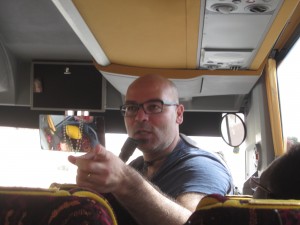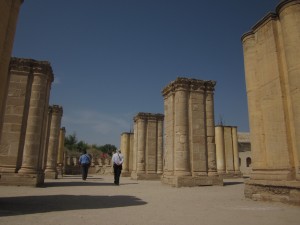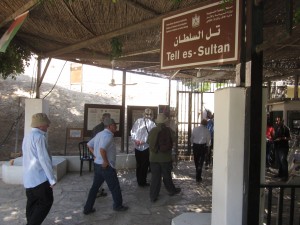On September 30 we drove to Jericho, which is administered by the Palestinian Authority. Husam Jubran, our guide, recounted how he was imprisoned in 1988 during the First Intifada, a Palestinian uprising against the Israeli occupation of the West Bank and Gaza that lasted from 1987 until 1991. At that time, said Jubran, he was a rock-throwing teenager. He was arrested and given a six-month sentence. He then decided to do something with his life, entered the university and earned a degree in sociology, specializing in tourism.
Driving through Jericho, we arrived at the ruins of Khirbat al-Mafjar, believed to be the palace of an eighth-century Caliph. It is one of the best-preserved ruins of art and architecture from the Umayyad Dynasty of early Islam. The palace includes an ornate bath complex and an agricultural estate. A large rose window from the main palace, featuring a six-pointed star, has been reconstructed. Inside the bath is the famous mosaic known as the Tree of Life, beneath which two deer graze and a third is attacked by a lion.
After viewing the Umayyad-era ruins, we drove to the Tel es-Sultan or Sultan’s Hill, the ruins of ancient Jericho. The site includes pottery shards that date back to the 8th millennium BC. There are ruins of a wall and tower that may have been the fortress that Joshua captured when the Hebrews entered the Promised Land. After lunch, we drove out into a desert waste. We visited the Mosque of the Prophet Moses, the site where some Muslims claim that the Moses was buried — a site now haunted by scrawny cats.



